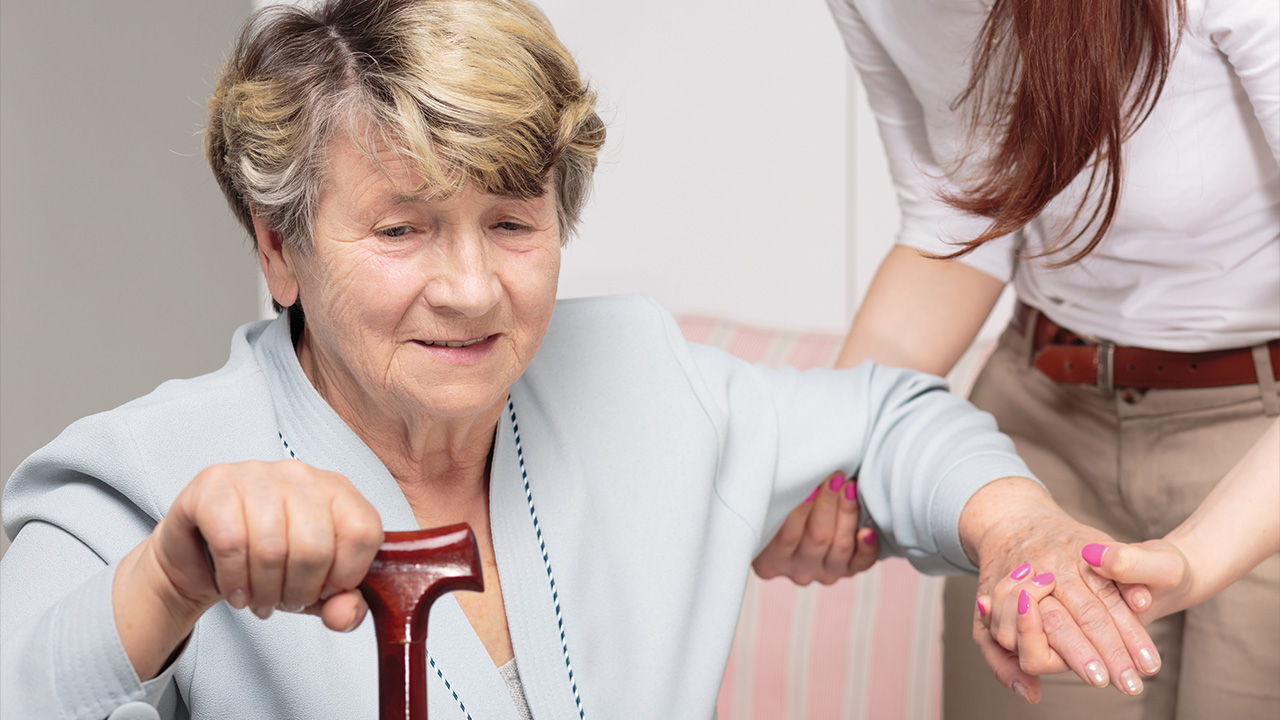When a senior needs extra help recovering from an accident or health setback, it’s important to properly plan geriatric rehabilitation services. Senior rehab can be provided in a variety of settings, depending on an elder’s unique medical needs. Choosing the right kind of follow-up care after a surgery or hospital stay will ensure your loved one has the best chances of regaining their health and independence.
Common Reasons for Geriatric Rehabilitation
A physician may recommend rehabilitation services for one or more of the following health conditions:
- Fracture or broken hip
- Joint injury or replacement
- Aneurysm
- Parkinson’s disease
- Neurological conditions
- Stroke
- Heart attack
- Arthritis
- Osteoporosis
- Brain injury
- Tumor/cancer
- Multiple sclerosis
- Limited mobility
- Frequent falls
- Amputation
- Swallowing issues (known as dysphagia)
- Pneumonia
The Goal of Rehabilitation for the Elderly
The goal of senior rehab is to help a patient return to their maximum functional potential after suffering a life-altering event. Geriatric rehabilitation providers are well equipped to conduct various therapies provided by health care workers, such as rehab physicians, physical therapists, occupational therapists, speech therapists, rehab nurses and social workers.
Goals for treatment vary depending on a senior’s needs and might include regaining communication skills, learning to use new mobility aids properly (e.g., a wheelchair or walker), adapting or regaining the ability to perform activities of daily living (e.g., bathing, dressing, toileting), and improving muscle strength, balance and coordination.
Types of Rehab Services
- Physical therapy (PT)
- Occupational therapy (OT)
- Speech therapy (SLP)
- Rehabilitation psychology
Kinds of Rehab for Seniors
There are several types of geriatric rehabilitation and the terminology can be confusing. The care setting, array of services offered, level of medical oversight, duration of treatment, and methods of payment differ for each type of senior rehab. A physician will discuss rehab options with a patient and their family members to determine the best fit for their needs.
For example, an elder may be healthy and stable enough to be discharged home from the hospital following a minor fall. However, their doctor might recommend a light course of physical therapy and/or occupational therapy to help improve their mobility and prevent future falls. Both PT and OT services can be provided either in the senior’s own home through a home health care agency or at an outpatient office.
On the other end of the spectrum, a senior who has had a very severe stroke may require both hospital-level care, around-the-clock supervision and intensive rehabilitation services. In this case, an inpatient rehabilitation facility (IRF) may be best—at least initially. The patient must be able to tolerate three hours of intensive therapy services daily to build up their strength and skills so they can be discharged to a lower level of care as soon as possible.
The type and duration of senior rehab varies depending on the severity of the condition(s) being treated and a patient’s potential for improvement. When determining next steps for a loved one following a significant medical setback, be sure to speak openly with their health care team about their options for geriatric rehabilitation services. In most cases, Medicare and Medicaid will only cover senior rehab services that a doctor orders and has certified are medically necessary for the patient.
